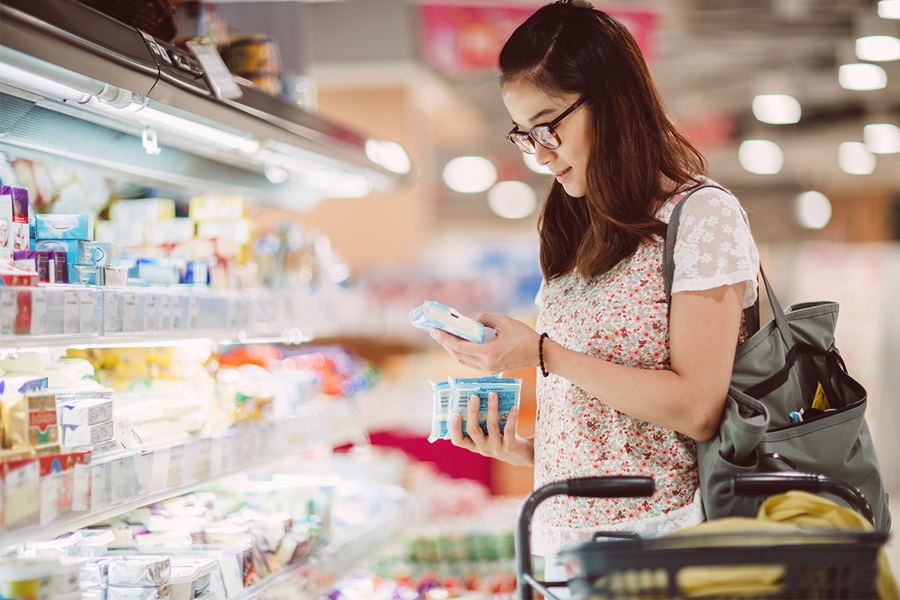The world continues to experience volatility and uncertainty due to the COVID-19 health crisis, and it is difficult to predict how spending on fast-moving consumer goods (FMCG) will change. The nature of quarantine and mobility restrictions drastically changes the behaviour of Filipinos, as consumers and as shoppers.
However, the fundamentals of brand growth will remain the same in 2021: attracting the largest number of consumers and shoppers will remain key. Achieving growth will depend on FMCG companies’ ability to evolve with the times and the emergence of new consumer needs resulting from a stay-at-home lifestyle.
We have identified 12 trends that will impact how consumers navigate the new normal in shopping in 2021 in Philippines.
1. The baby boom impact
Citing a study by the University of the Philippines Population Institute and the United Nations Population Fund, the Commission on Population and Development said that nearly 2 million babies are expected to be born in the country this year, more likely from the lower socio-economic classes (SEC). This baby boom will present opportunities for baby categories as well as the full repertoire of FMCG products, especially for new mothers.
2. Cautious spending
Throughout the pandemic, most households have cut their FMCG expenditure to manage their budgets. Kantar’s July 2020 Purchase Confidence study revealed that 79% expressed worry about their financial situation. The report emphasises value for money as the highest consideration, as Filipino shoppers focus on making the most of their budget.
3. Ecommerce expansion
Online shopping remains nascent in the Philippines despite the disruption experienced by brick and mortar stores due to the pandemic. Only 8% of the population purchased FMCG products online in 2020. Yet this channel is undeniably growing, with 772,000 additional buyers, although it currently remains skewed towards higher SEC and National Capital Region (NCR, Metropolitan Manila) shoppers.
To leverage this channel, brands must not underestimate the differences in behaviour and basket content of online versus offline consumers. Ecommerce as a marketing touchpoint may also lead to offline purchases.
4. Leveraging omnichannel
Loyalty to one channel is almost non-existent. Filipinos continuously adapt their channel repertoire depending on their needs. This has reinforced omnichannel shopping; keeping the pulse of channel choices is critical as behaviour has become more volatile.
5. Enjoying the convenience and proximity of local retailers
In relation to the fourth trend, each retailer holds a unique positioning. Shoppers with limited mobility prefer proximity when visiting stores in their locality. 9 out of 10 Filipinos prefer to shop in nearby stores, offering an opportunity for retailers to consider expanding in or close to residential areas.
6. Antibacterial products
Unsurprisingly, antibacterial products have been highly relevant to Filipino households. However, as more and more brands leverage their virus-killing advantage, they need to step up their game and combine this essential function with additional benefits.
7. The quest for immunity
The attraction health and immunity benefits in FMCG products is undeniable. Brands can grow by raising awareness of the health and nutritional value of their products to attract more Filipino consumers.
8. Bringing the outside in
Filipinos are likely to increase their mobility in 2021, assuming we see an easing of quarantine restrictions across the country. But they will remain very cautious in venturing out.
Filipinos may seek convenience and versatility as their lifestyles continue to evolve and brands must be able to adapt accordingly.
9. Impulse at home
Less frequent purchases and budgetary constraints affected impulse categories last year. These factors are expected to continue in 2021. But assuming mobility stabilises or improves, the recovery of impulse products could experience slow but sustained growth.
10. The joys of pampering returns
The personal care category, particularly beauty products, were drastically deprioritised when the Philippines implemented the enhanced community quarantine in March 2020.
Similar to impulse categories, we expect that 2021 could see the slow return of the Filipinos’ beauty routines. This will still be subject to improved mobility and consumers’ desires for normality.
11. Regionalisation of behaviours
There have always been nuances in shopping behaviour by region in the Philippines. With the pandemic evolving at a different pace, brands need to keep an eye on regional behaviour and tailor their execution of marketing touchpoints to reach consumers based in the NCR, Northern or Southern Luzon, Visayas or Mindanao.
12. Sustainability
Our Who Cares, Who Does? 2020 report revealed that 75% of Filipino shoppers seek out brands that offer ways to offset their environmental impact. Most importantly, consumers believe manufacturers should be driving the sustainability agenda. Developing a sustainability strategy has become paramount for brands.
These trends will not necessarily manifest in all shoppers or all Filipino households. To reach more consumers now more than a year into the pandemic, brands need to identify key targets, prioritise them based on how valuable they may be for the brand, and activate them through the right pack, price and channel strategy.

